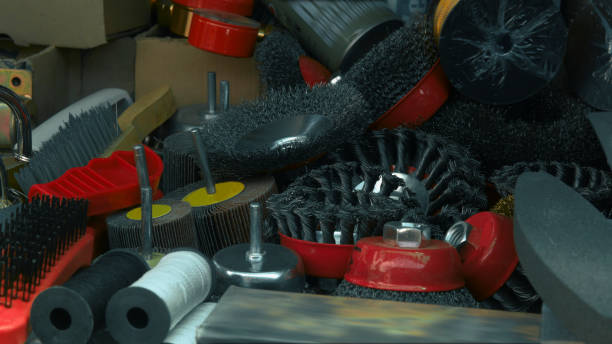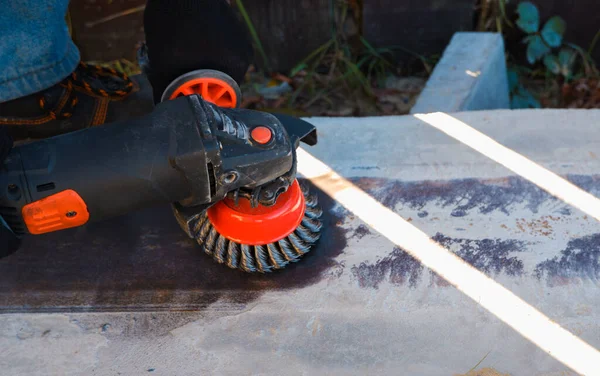Finishing metal surfaces can be a challenging task, requiring the right tools and techniques to achieve a smooth, polished appearance. Steel brushes are among the most versatile tools for this job, offering excellent performance in cleaning, deburring, and finishing. However, to make the most out of steel brushes and ensure a high-quality finish, certain tips and techniques should be followed. In this article, we will discuss various tips for better finishing with steel brushes, helping you elevate your craftsmanship and achieve professional results.
Understanding Steel Brushes
Before diving into the tips for finishing, it is essential to understand the different types of steel brushes available. Steel brushes typically consist of bristles made from stainless or carbon steel and are available in various forms, including:
- Cup Brushes: These brushes have bristles arranged in a circular cup shape and are often used on angle grinders. They are excellent for surface preparation and finishing on flat surfaces.
- Wheel Brushes: Similar to cup brushes, wheel brushes are flat and can be used on both flat and contoured surfaces. They are perfect for polishing and cleaning intricate designs.
- Hand Brushes: These are manual brushes that come in various sizes and shapes. Hand brushes are suitable for detailed work, allowing for more control over the finishing process.
- Disc Brushes: These brushes are designed for use in automated machines and can be used for thorough finishing on flat and curved surfaces.
Understanding the right type of brush for your specific application will enhance the finishing process, enabling you to achieve better results.
Tips for Better Finishing with Steel Brushes
- Choose the Right Brush Type
Selecting the appropriate brush type is crucial for achieving the desired finish. For instance, if you need to work on flat surfaces, cup brushes or wheel brushes may be the best choice. For detailed work, hand brushes are ideal. Always consider the shape and size of the brush in relation to the surface you are working on.
- Select the Appropriate Brush Size
Using the correct brush size is equally important. A brush that is too small may not cover the surface area efficiently, while a brush that is too large may be difficult to control, leading to uneven finishes. Ensure that the brush size is compatible with the surface area and complexity of the job.
- Understand Wire Thickness and Material
Steel brushes come with varying wire thicknesses and materials, impacting their performance and finish. Thicker wires remove material more aggressively, making them suitable for heavy cleaning or surface preparation. In contrast, finer wires produce a smoother finish, making them better for polishing and delicate work. Always choose the right wire thickness based on the intended application.
- Use the Right Angle
The angle at which you hold the brush can significantly affect the finishing results. For effective cleaning and deburring, hold the brush at a 45-degree angle to the surface. This angle allows for optimal bristle contact and better material removal. For polishing, maintain a more upright position to avoid aggressive scrubbing and achieve a smooth finish.
- Maintain Consistent Pressure
Applying consistent pressure while brushing is essential for achieving an even finish. Too much pressure can damage the surface and lead to uneven results, while too little pressure may not effectively remove material. Aim for a balance by using just enough pressure to allow the bristles to make contact without excessive force.
- Move in the Right Direction
When using steel brushes, the direction of your movement matters. Always brush in the same direction as the grain of the material. This approach not only improves the finish but also reduces the likelihood of scratches and other imperfections. For metal surfaces, it’s generally advisable to work from one end to the other in a straight line.
- Clean the Surface Regularly
As you work, debris and dust can accumulate on the surface, affecting the finish quality. Regularly clean the surface to remove any buildup. This practice will ensure that you achieve a consistent finish throughout the entire process.
- Use Proper Safety Gear
Steel brushes can produce sparks and debris during operation, so it’s crucial to wear appropriate safety gear. Always use safety goggles, gloves, and protective clothing to shield yourself from potential hazards. Additionally, ensure that the work area is free from flammable materials to minimize risks.
- Experiment with Different Techniques
Don’t be afraid to experiment with different brushing techniques to find what works best for your specific project. For instance, varying the speed of your brush, the angle of approach, and the pressure applied can yield different results. Take the time to practice and refine your technique for optimal finishing.
- Maintain Your Brushes
Taking care of your steel brushes will extend their lifespan and ensure consistent performance. After each use, clean the brushes to remove debris and dust. Store them in a dry, cool place to prevent rust and deterioration. If you notice that the bristles are worn or damaged, consider replacing the brush to maintain the quality of your finishes.
- Use a Back-and-Forth Motion
For smoother finishes, consider using a back-and-forth motion while brushing. This technique allows for more thorough material removal and can help prevent uneven patches. However, ensure that the motion is gentle to avoid damaging the surface.
- Adjust Speed for Different Tasks
If you’re using a power tool, adjust the speed of the brush according to the task at hand. Higher speeds may be necessary for heavy material removal, while lower speeds are better suited for polishing and finishing tasks. Finding the right speed for your application will improve the overall quality of the finish.
- Be Mindful of Heat Generation
Excessive heat can cause damage to the workpiece and the brush itself. To prevent overheating, work in short intervals and allow the surface to cool as needed. Additionally, be cautious of any burning odors, which may indicate that the brush or material is overheating.
- Use Lubrication When Necessary
In some cases, using lubrication during the brushing process can improve the finish and reduce friction. Lubrication can help to achieve a smoother surface, especially when working with softer materials. Ensure that the lubricant is compatible with the material being brushed to avoid adverse reactions.
- Know When to Change Techniques
Finally, be aware that different materials may require different finishing techniques. For instance, stainless steel may require finer brushes and lighter pressure, while harder metals may need more aggressive brushing. Be adaptable and ready to change your technique based on the material and desired finish.
Conclusion
Achieving a high-quality finish with steel brushes requires an understanding of the tools, techniques, and materials involved. By selecting the right brush type and size, maintaining consistent pressure, and employing proper brushing techniques, you can significantly improve your finishing results. Remember to prioritize safety and care for your brushes to ensure their longevity and effectiveness.
With these tips in mind, you will be well on your way to mastering the art of finishing with steel brushes, delivering professional-quality results in your metalworking projects. Whether you are a seasoned professional or a DIY enthusiast, honing your skills with steel brushes will elevate your craftsmanship and open up new possibilities in your work.


